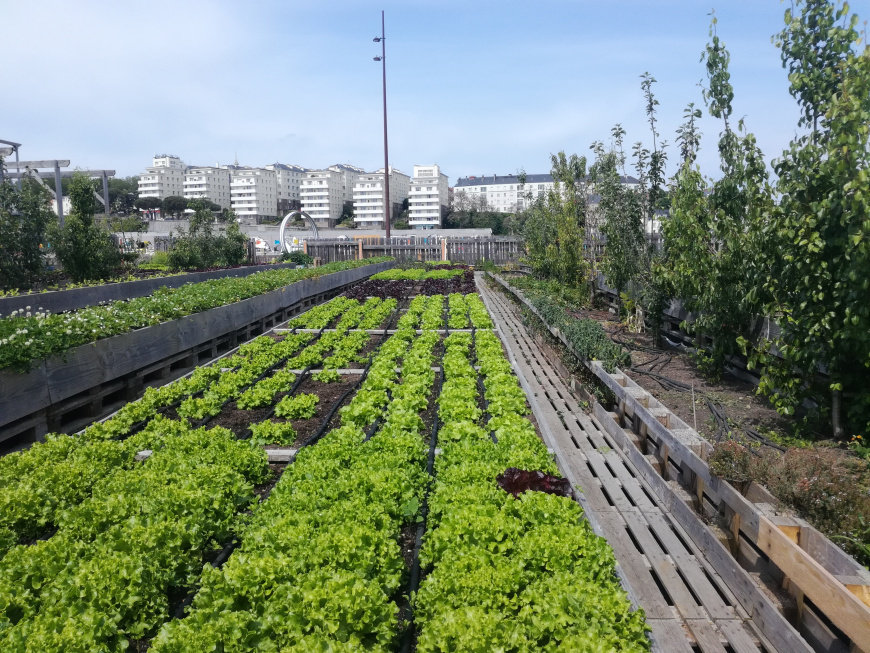The 6-Minute Rule for City Blooming
Wiki Article
Some Known Incorrect Statements About City Blooming
Table of ContentsThe Greatest Guide To City BloomingThe Ultimate Guide To City BloomingThe Best Guide To City BloomingFacts About City Blooming UncoveredThe Only Guide to City Blooming
Fascinated in expanding food to buy in the City of Chicago? Considering starting a neighborhood garden? Modifications to the Chicago Zoning Ordinance allow farming uses like neighborhood gardens and city ranches in several components of the city. Below is a checklist of regularly asked questions pertaining to the guidelines and regulations that growers need to consider when intending a city agriculture task.
The zoning amendment does not change any various other codes dealing with composting, structure permits, buying or renting City possessed home, company licenses or ecological contamination. There are existing codes that regulate these problems and they stay completely impact and might be suitable to your project. Neighborhood yards are commonly owned or taken care of by public entities, public organizations or community-based companies and maintained by volunteers.
Urban ranches expand food that is intended to be sold, either on a nonprofit or for-profit basis. As a result of their industrial function, city farms need a business license. Yes. A community garden is enabled to sell surplus produce that was grown on site if the sales are accessory or subservient to the yard's main function described above.
The 45-Second Trick For City Blooming
The amount of compost material can not exceed 25 cubic backyards at any type of given time according to the standards in 7-28-715 of the City's Municipal Code. Because the dirt at most brand-new yard sites needs changing, compost, dirt, wood chips, or various other products can be obtained to construct or improve the expanding area.
If a building permit is called for after that the hoophouse will certainly be taken into consideration an accessory structure. You can learn more about the structure authorization demands by speaking to the Division of Buildings. The 25,000-square-foot dimension limitation is meant to stop a solitary area yard from controling a provided block or taking away from the block's existing household or business character.
The restriction does not use to gardens situated in Public Open Room (POS) areas. Can there be even more than one area garden that is 25,000 square feet on a solitary block? Fencing is not called for, nevertheless, gardens that have huge car park locations may be required to mount fence or various other landscape design features.
Indicators on City Blooming You Should Know
B1 & B2 districts need that all industrial usage activities be performed inside your home. Is secure fencing required for city ranches? Fences may be needed, along with landscaping and testing, for particular car park locations and outdoor work or storage areas depending on place and the certain activity taking place.Yes. Urban farms need structure authorizations and zoning authorizations prior to building. Other types of city evaluation may be needed depending upon certain frameworks, activities, size, landscaping, licensing, public health and stormwater monitoring concerns. A number of these needs are determined in the job design or allowing procedure, however, the candidate may be liable to independently identify particular licenses or allows that may be required.
Yes. The kind of permit is established by what is taking place at the site. The Division of Organization Matters and Customer Defense can help establish the details kind of business certificate that's needed. Yes. Off street vehicle parking is required for many commercial tasks in Chicago. The called for variety of parking rooms is based on the variety of workers functioning on site and not the square video of the growing area.
Get This Report about City Blooming

A metropolitan farm can sell garden compost product created on website, nevertheless, the procedure needs to conform with the policies in 7-28-715 of the Chicago Municipal Code. Aquaponic systems are allowed inside on city farms in lots of zoning districts.
Up to 5 hives or swarms of honey might be maintained as an accessory use. Nevertheless, beekeepers should sign up with the Illinois Division of Farming. For more details about the suggested zoning change you may speak to the Department of Housing and Economic Advancement, Bureau of Planning and Zoning at 312.744.8563.
, which takes area in country locations at the side of residential areas.
The Definitive Guide to City Blooming
It can entail a motion of natural growers, "foodies" and "locavores", who look for to develop socials media based on a common ethos of nature and community holism. These networks can urban gardening establish by way of official institutional support, coming to be integrated right into local town as a "change town" activity for lasting city advancement.Some of the very first proof of urban farming comes from Mesopotamia.
Report this wiki page